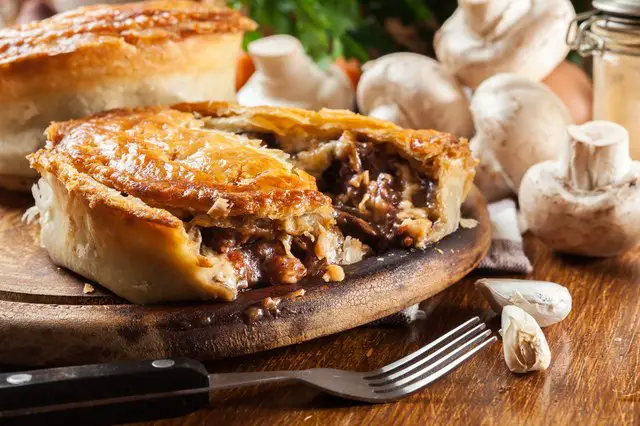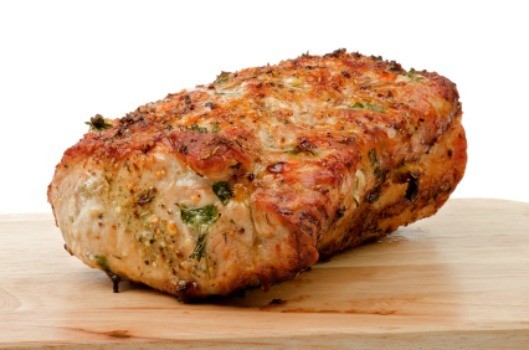Linguica is a delicious Portuguese sausage that can be easily cooked on the stovetop. In this article, we will guide you through the process of cooking linguica to perfection. Whether you’re a fan of this flavorful sausage or looking to try something new, our step-by-step instructions will help you unlock the flavors of linguica in no time.
Key Takeaways:
- Linguica is a savory Portuguese sausage with a unique flavor profile.
- Before cooking, remove the casing and slice the linguica to your desired thickness.
- Cook the linguica on a stovetop using a skillet or frying pan, until it is golden brown and cooked through.
- Serve linguica as a standalone dish or incorporate it into various recipes like pasta dishes, soups, and stews.
- Store leftover linguica in an airtight container in the refrigerator or freeze it for longer-term storage.
What is Linguica?
Linguica is a type of Portuguese sausage that is renowned for its unique flavors and culinary versatility. This sausage is made from high-quality pork and is seasoned with a delectable blend of garlic, paprika, and various spices. The result is a distinctive taste that is smoky, slightly spicy, and packed with savory goodness.
Traditionally used in Portuguese cuisine, linguica adds a delightful depth of flavor to a wide range of dishes. Its robust taste pairs exceptionally well with other ingredients, making it a favorite choice for both home cooks and professional chefs alike. Whether you’re preparing a hearty feijoada, a comforting caldo verde, or even a flavorful linguica pizza, this sausage is sure to elevate your culinary creations to new heights.
With its rich and satisfying flavors, linguica is a fantastic ingredient to experiment with in your cooking. Whether you’re a fan of traditional Portuguese fare or simply looking for a way to spice up your meals, linguica is a delicious choice that is sure to leave your taste buds wanting more.
Preparing Linguica for Cooking
Before we dive into cooking linguica on the stovetop, it’s essential to properly prepare this flavorful Portuguese sausage. To begin, remove the outer casing, which is typically not edible. You can easily do this by slicing the linguica lengthwise and gently peeling away the casing. Once the casing is removed, you’ll have access to the succulent meat inside.
Now that your linguica is free from its casing, the next step is to slice it to your desired thickness. The thickness of the slices will depend on your recipe or personal preference. If you want linguica to be the star of the dish, you can opt for thicker slices. On the other hand, if you prefer it to blend more subtlety with other flavors, thinner slices may be the way to go.
Whether you’re planning to pan-fry, grill, or incorporate linguica into a recipe, properly preparing it is essential to achieve the best results. Removing the casing and deciding on the thickness of the slices allows the flavors to shine and ensures even cooking. Now that the linguica is prepped, we can move on to the exciting part – cooking this delectable sausage on the stovetop!
Cooking Linguica on the Stovetop
Cooking linguica on the stovetop is a simple and delicious method that will elevate your culinary skills. To begin, heat a skillet or frying pan over medium heat and add a small amount of oil or butter. This will prevent the linguica from sticking to the pan and help achieve a golden brown and crispy exterior.
Once the pan is hot, place the sliced linguica in a single layer, making sure not to overcrowd the pan. This allows the sausage to cook evenly and ensures that each slice develops a flavorful crust. You can also choose to sear the linguica, which involves cooking it over high heat for a shorter period of time to create a deep caramelized exterior.
Cook the linguica for about 3-4 minutes on each side, or until it is golden brown and cooked through. You can adjust the cooking time based on your desired level of crispiness. For a slightly softer texture, reduce the cooking time, and for a crispier texture, cook it for a slightly longer time.
Tips for Pan-Frying Linguica:
- Remove the outer casing before cooking to enhance the flavors and ensure a pleasant texture.
- Experiment with different cooking fats like olive oil or bacon grease to add additional depth of flavor to the linguica.
- If you prefer a smokier flavor, you can cook the linguica over a charcoal grill or add a small amount of liquid smoke to the pan.
- Allow the cooked linguica to rest for a few minutes before serving to allow the juices to redistribute and enhance the overall taste.
| Linguica Cooking Times | Description |
|---|---|
| 3-4 minutes per side | Golden brown and cooked through with a slightly tender interior. |
| 4-5 minutes per side | Golden brown with a slightly crispy exterior and a firmer texture. |
| 5-6 minutes per side | Deep golden brown and crispy throughout for a more intense flavor and texture. |
Serving Suggestions for Linguica
Once you have cooked linguica to perfection, there are countless delicious ways to serve and enjoy this flavorful Portuguese sausage. Whether you want to create a standalone dish or incorporate it into your favorite recipes, linguica adds a unique and savory kick to any meal.
1. Linguica and Eggs
Linguica pairs exceptionally well with eggs, making it a perfect choice for a hearty breakfast or brunch. Serve linguica alongside scrambled eggs for a protein-packed morning meal. For a satisfying breakfast sandwich, layer cooked linguica on a toasted English muffin or bagel with your choice of toppings like cheese, tomatoes, and avocado.
2. Pasta, Soups, and Stews
Bring bold flavors to your pasta dishes, soups, and stews by incorporating linguica. The smoky and slightly spicy taste of linguica adds depth and richness to these comfort food classics. Consider adding sliced linguica to a creamy pasta carbonara or a hearty bean soup for an extra burst of flavor.
3. Traditional Portuguese Recipes
Embrace the Portuguese culinary heritage by using linguica in traditional dishes like feijoada and caldo verde. Feijoada, a hearty black bean stew, is often made with linguica, creating a vibrant and satisfying meal. Caldo verde, a Portuguese soup made with potatoes, kale, and linguica, is a comforting and flavorful option for colder days.
| Dish | Description |
|---|---|
| Linguica and Eggs | Scrambled eggs paired with linguica for a protein-packed breakfast. |
| Pasta Carbonara | Creamy pasta dish featuring linguica for a smoky and spicy twist. |
| Feijoada | A hearty black bean stew made with linguica, a classic Portuguese dish. |
| Caldo Verde | A comforting Portuguese soup with potatoes, kale, and linguica. |
Storing and Reheating Linguica
If you find yourself with leftover linguica, there are a few things you can do to ensure it stays fresh and flavorful. First, allow the cooked linguica to cool completely before transferring it to an airtight container. This will help prevent any moisture from building up and compromising the texture. It’s best to store linguica in the refrigerator, where it can stay fresh for up to 3-4 days.
If you have more linguica than you can eat within a few days, freezing is a great option. Simply wrap the cooked linguica tightly in plastic wrap or aluminum foil and place it in a freezer-safe bag or container. Properly stored, frozen linguica can last for several months without losing its quality.
When you’re ready to enjoy your linguica leftovers, there are a few ways you can reheat it. One simple method is to pan-fry the linguica again. Heat a skillet over medium heat and add a small amount of oil or butter. Place the linguica in the pan and cook for a few minutes on each side until it is heated through.
If you’re looking for a quicker option, you can also microwave the linguica. Simply place the slices on a microwave-safe plate and heat them on high for about 30 seconds. Keep an eye on the linguica as microwaves can vary in power, and you don’t want it to become dry or overcooked.
To ensure the best flavor and texture when reheating linguica, it’s important not to overcook it. Keep a close eye on the linguica as it reheats, and remove it from the heat as soon as it’s heated through. This will help preserve the juicy and flavorful qualities that make linguica so delicious.
| Storing Linguica | Reheating Linguica |
|---|---|
| Allow cooked linguica to cool completely before storing in an airtight container. | Reheat linguica by pan-frying it again or microwaving for a quick option. |
| Store linguica in the refrigerator for up to 3-4 days. | When pan-frying, use a skillet over medium heat with a small amount of oil or butter. |
| For longer-term storage, wrap cooked linguica tightly and freeze for several months. | When microwaving, heat linguica on high for about 30 seconds, keeping an eye on it to prevent overcooking. |
Exploring Different Types of Linguica
When it comes to linguica, the traditional Portuguese sausage, there is a world of regional variations to discover. Each type of linguica has its own unique flavors, adding a delightful twist to your culinary creations. Let’s take a journey through the different types of linguica and explore the regional variations that make them special.
One variation that stands out is the Azorean linguica. Known for its strong garlic taste, this type of linguica adds a bold and robust flavor to any dish. The garlic lovers among us will be delighted by its aromatic profile, which can elevate everything from pasta dishes to soups and stews.
Another type of linguica worth exploring is the Brazilian linguica. This variation often incorporates additional spices like cumin and coriander, resulting in a more complex and vibrant flavor profile. Brazilian linguica adds a touch of exoticism to your recipes, opening up a world of possibilities in fusion cuisine.
By embracing the different types of linguica, you can unlock new flavors and cooking techniques in your kitchen. Whether you’re a fan of the traditional Portuguese style or eager to try something new, there’s a linguica out there that will expand your culinary horizons. So don’t be afraid to experiment and incorporate these regional variations into your favorite recipes. Your taste buds will thank you!
FAQ
How do I cook linguica on the stovetop?
To cook linguica on the stovetop, start by removing the casing, then slice the sausage to your desired thickness. Heat a skillet or frying pan over medium heat, add oil or butter, and cook the linguica for about 3-4 minutes on each side until golden brown and cooked through.
What is linguica?
Linguica is a delicious Portuguese sausage made from pork and seasoned with garlic, paprika, and other spices. It has a unique flavor profile and is often used in traditional Portuguese dishes.
How do I prepare linguica for cooking?
Before cooking linguica, remove the outer casing by slicing the sausage lengthwise and peeling it away. Once the casing is removed, you can slice the linguica to your desired thickness.
How do I cook linguica on the stovetop?
To cook linguica on the stovetop, heat a skillet or frying pan over medium heat, add a small amount of oil or butter, and cook the sliced linguica for about 3-4 minutes on each side until it is golden brown and cooked through.
What are some serving suggestions for linguica?
Linguica can be enjoyed on its own or incorporated into various recipes. It pairs well with eggs, so you can serve it with scrambled eggs or make a linguica and egg breakfast sandwich. It also adds flavor to pasta dishes, soups, stews, pizzas, and sandwiches.
How should I store and reheat linguica?
Allow the cooked linguica to cool completely before transferring it to an airtight container. You can store it in the refrigerator for up to 3-4 days or freeze it for longer-term storage. To reheat, simply pan-fry it again or microwave it.
Are there different types of linguica?
Yes, there are regional variations of linguica with unique flavors. For example, Azorean linguica is known for its strong garlic taste, while Brazilian linguica often includes additional spices like cumin and coriander. Exploring these different types can introduce you to new flavors and cooking techniques.





